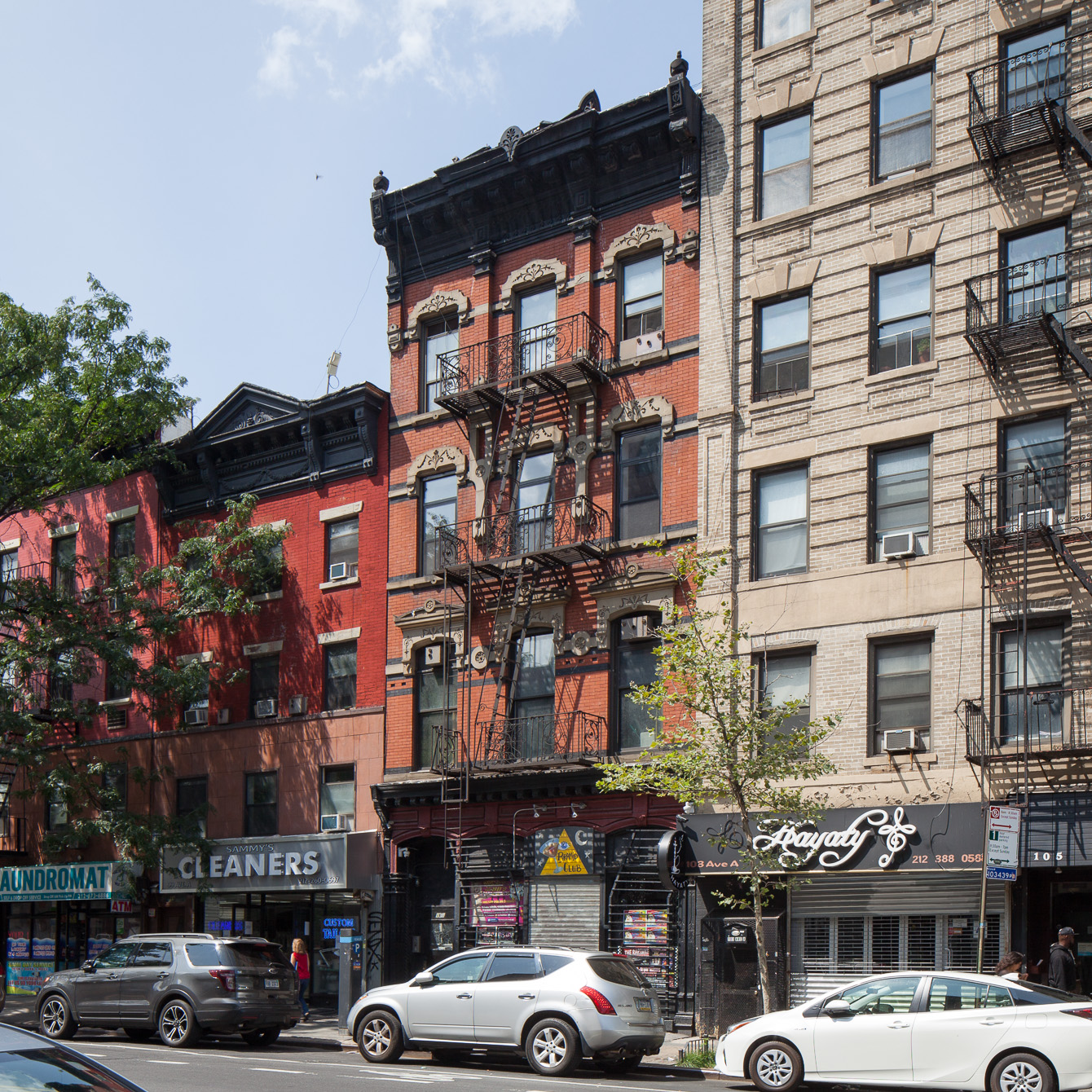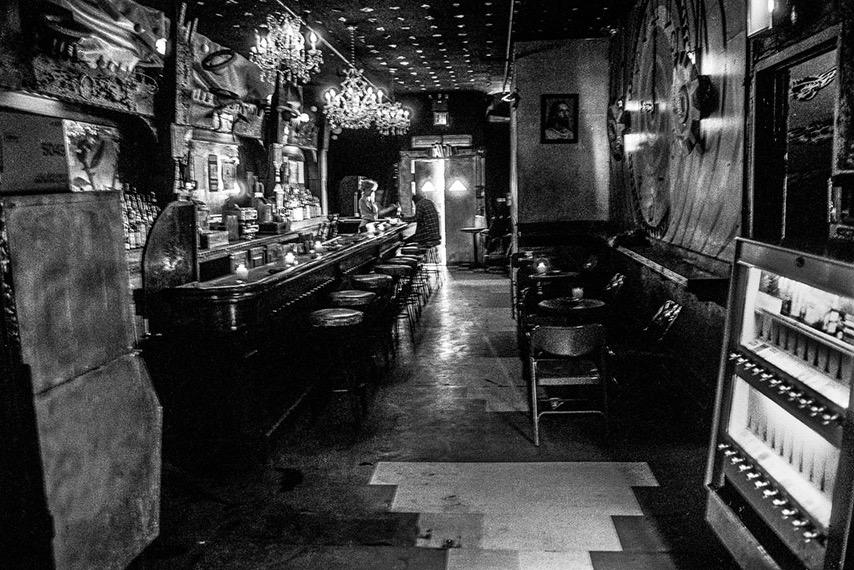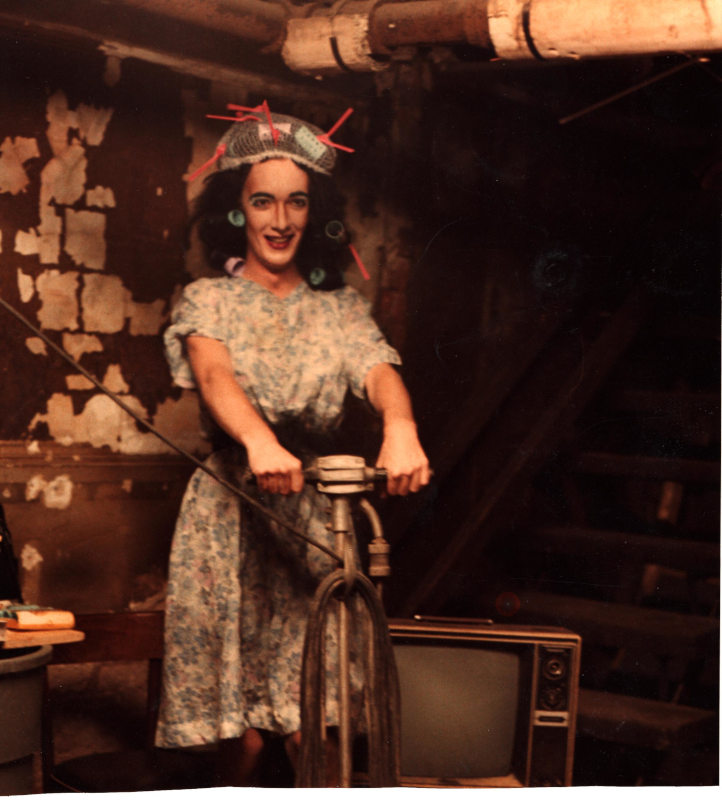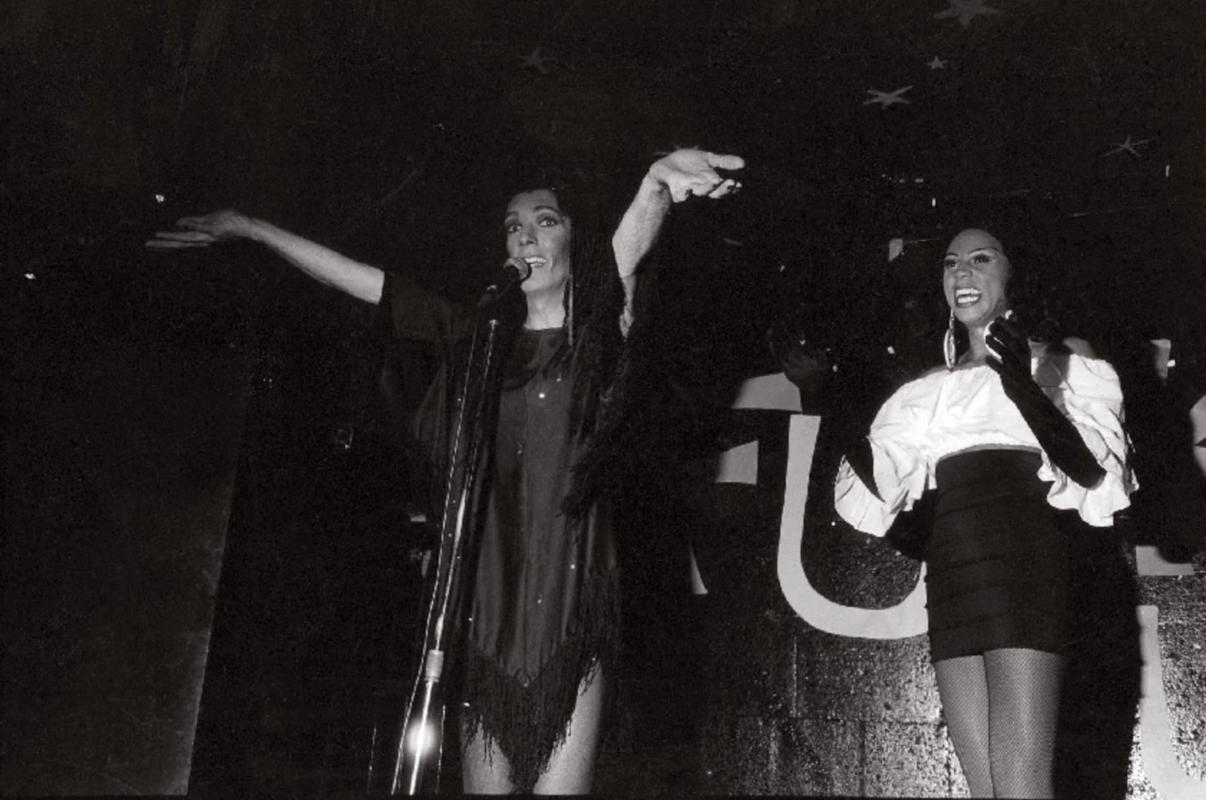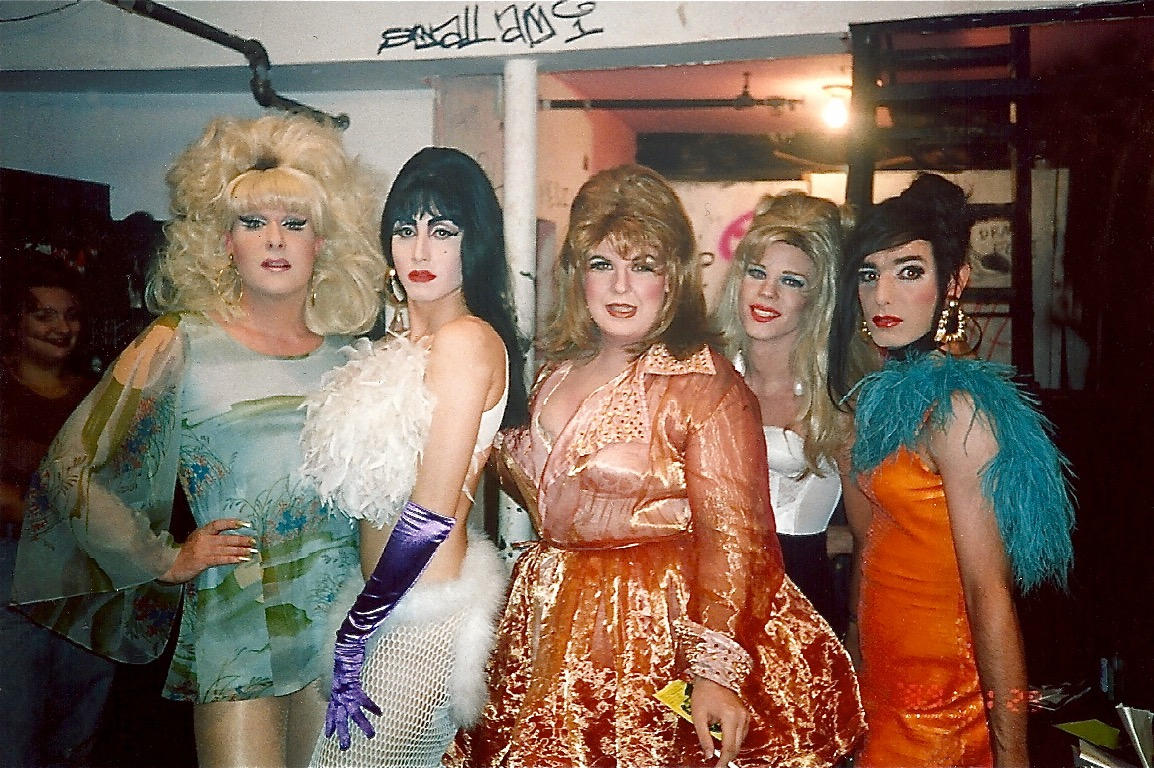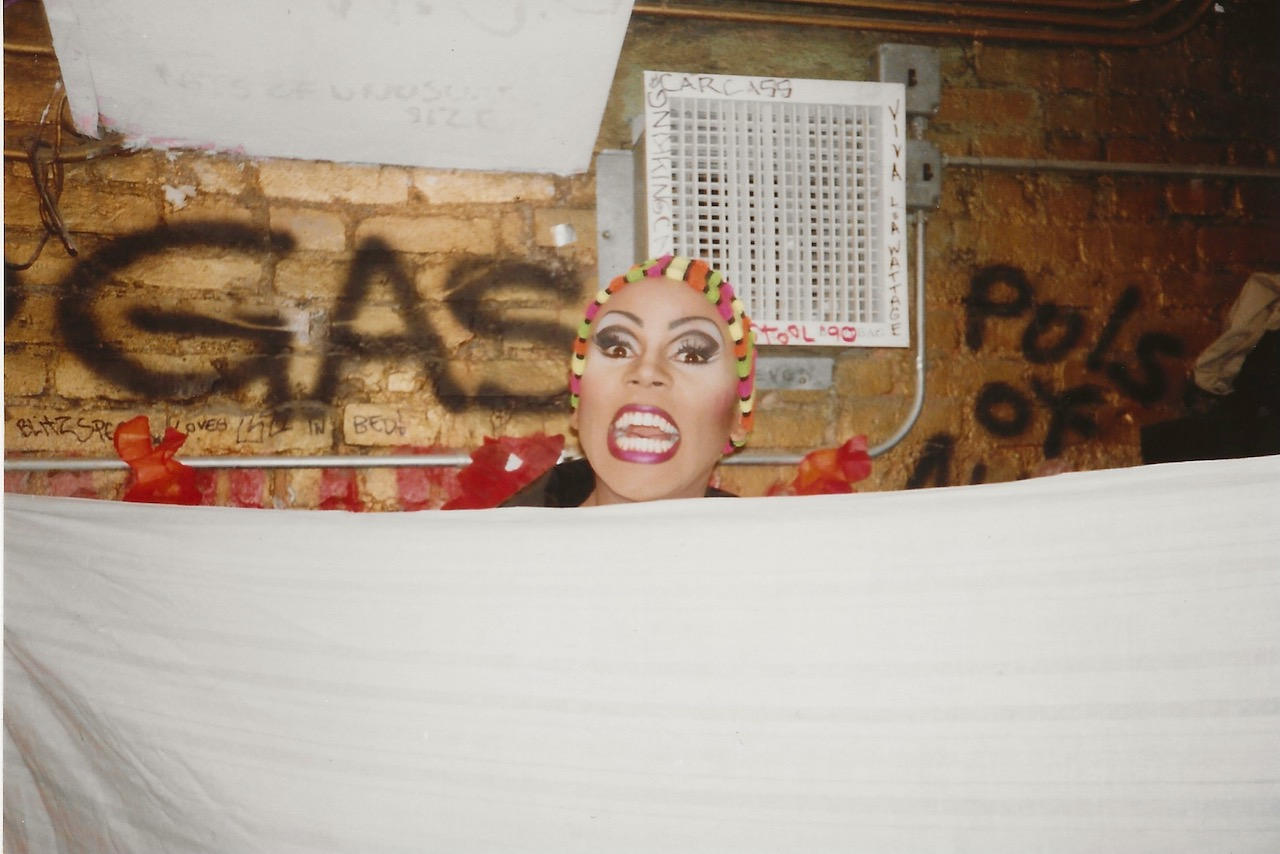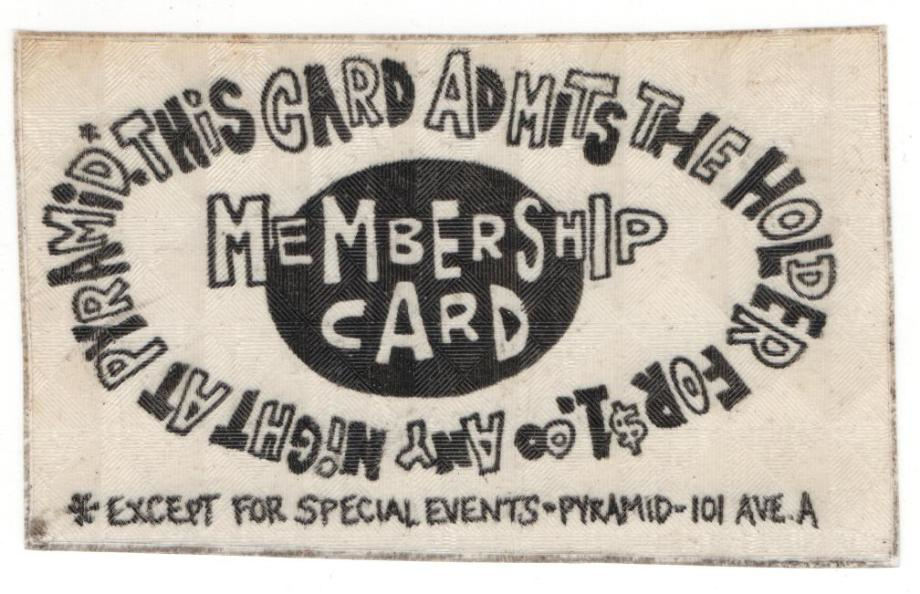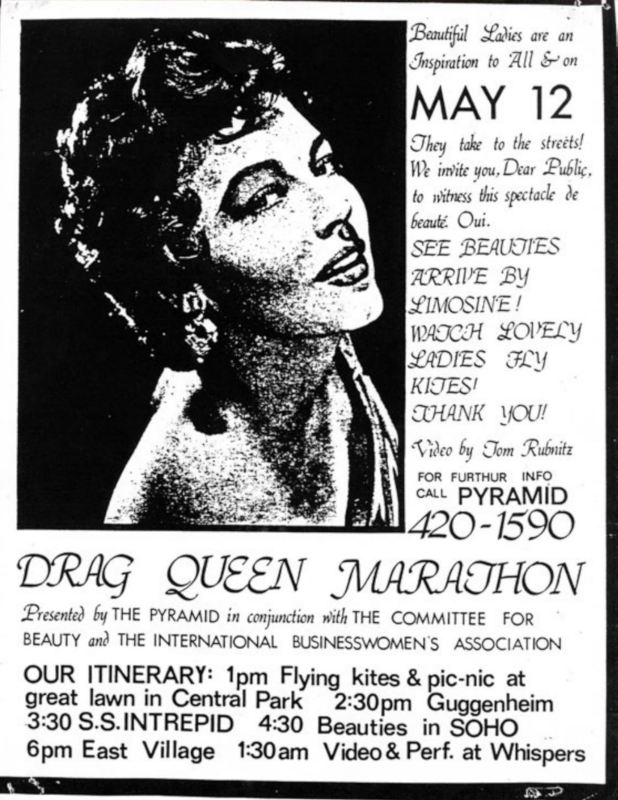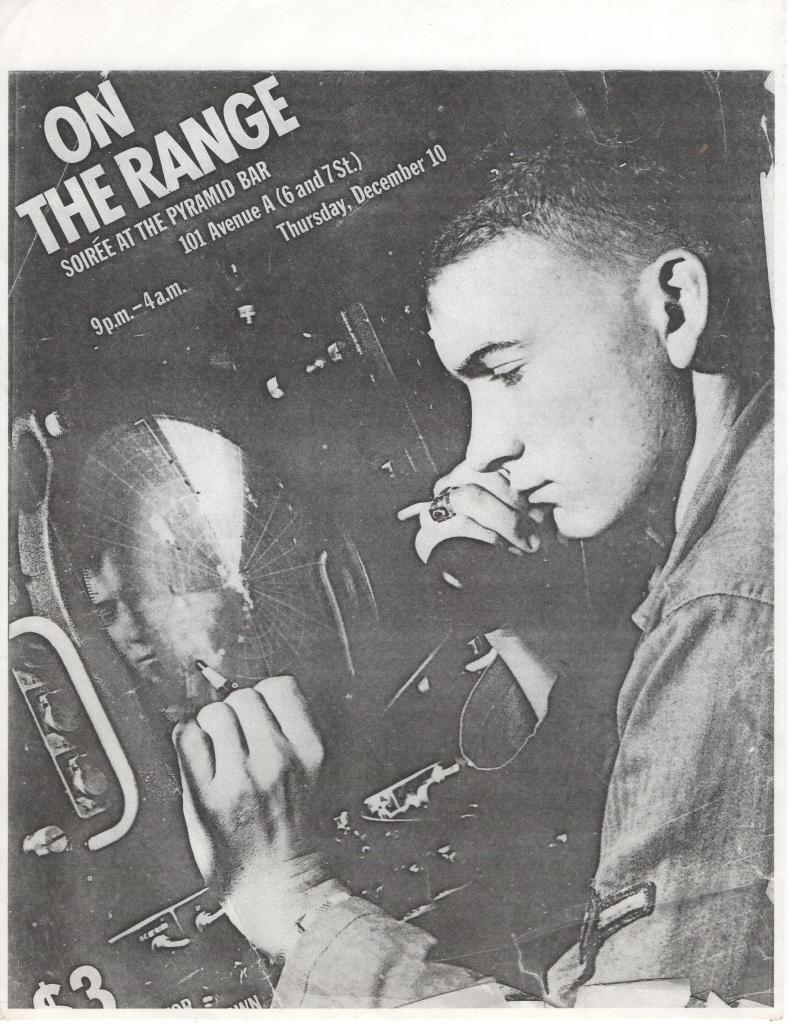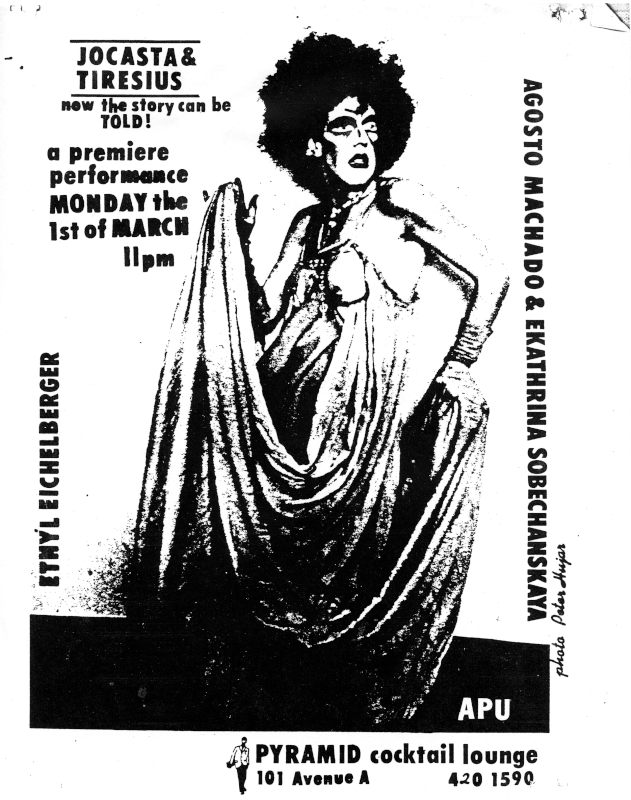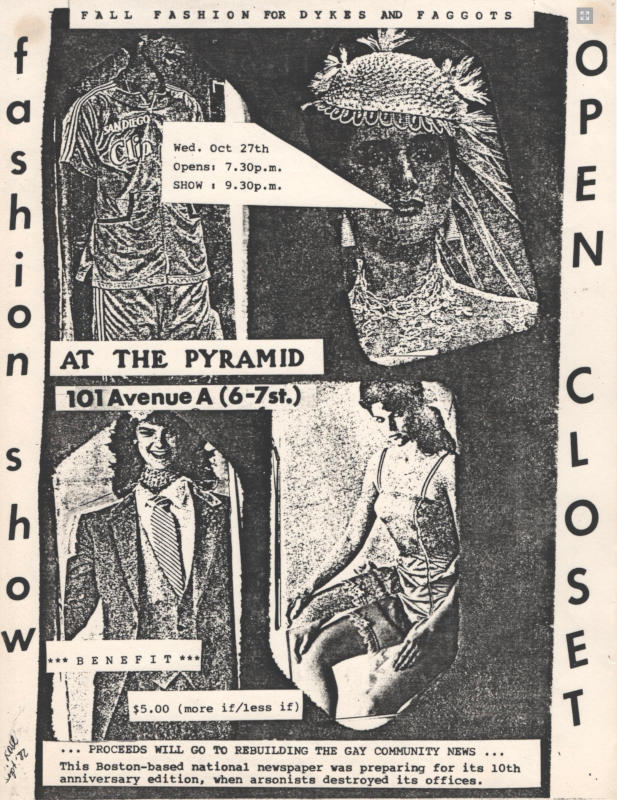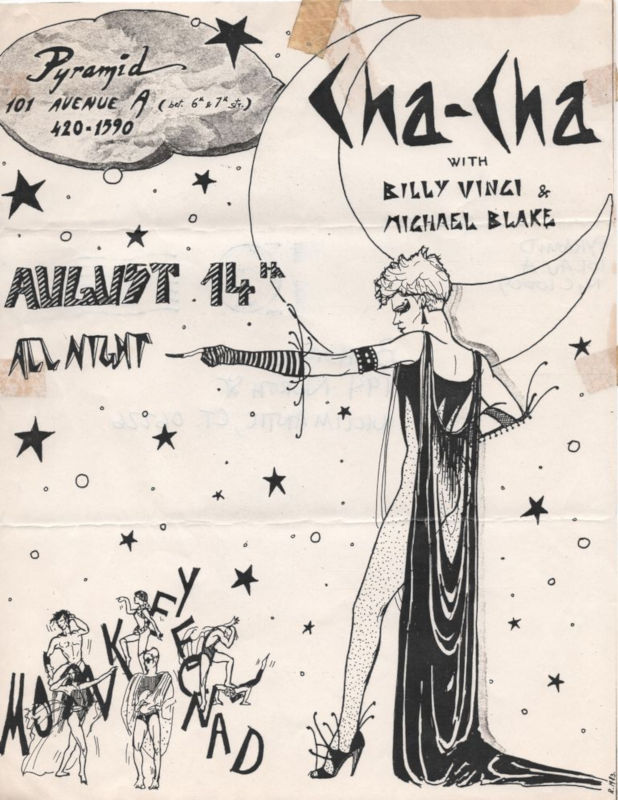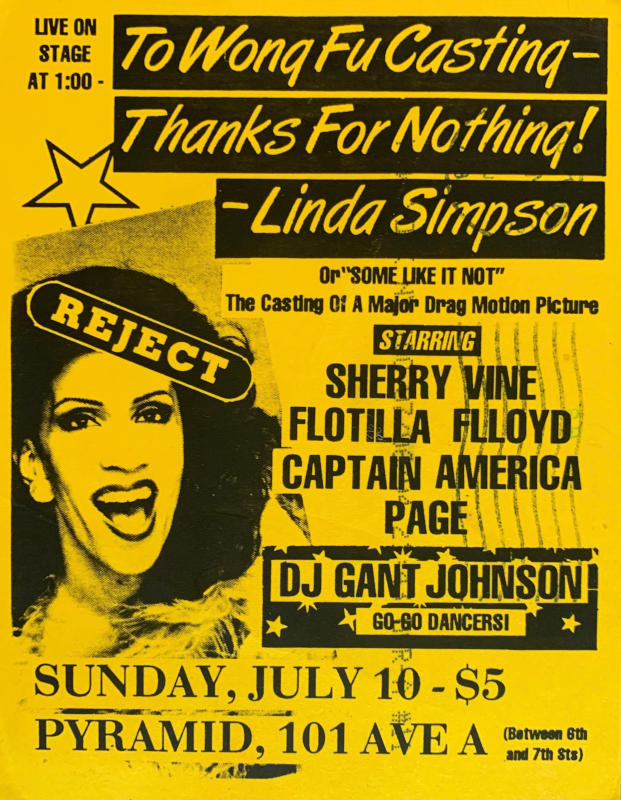overview
Opened in 1979, the Pyramid Cocktail Lounge came into its own in 1981 as a primary hub for the burgeoning East Village drag, gay, punk, and art scenes that continued throughout the 1980s and 1990s.
It fostered a new breed of experimental and politicized drag performers and played a pivotal role in expanding the art of drag to a new audience as it became a visible and vibrant component of downtown nightlife.
History
In 1979, the ground floor space of 101 Avenue A opened as the Pyramid Cocktail Lounge, billing itself as New York’s hottest new cruise bar, but it struggled to gain traction. On December 10, 1981, nearby resident Bobby Bradley, his boyfriend Alan Mace, and Victor Sapienza, each recently let go as employees from the struggling nightclub Interferon, convinced Pyramid owner Richie Hajguchik to let them throw the club’s official “Home on the Range” re-launch party. It featured drag queen John Kelly, known from both Club 57 and Mudd Club, and Mace as DJ. Tanya Ransom (Michael Norman), founder of the Anvil’s “New Wave Night,” brought over that club’s custom of having drag queens dance atop the bar.
The party was so successful that Hajguchik suggested they expand to a daily schedule. In rebooting the Pyramid, the trio combined the experimental art and performances from Club 57 and Mudd Club, with the seedy drag shows and go-go dancers from the Anvil and the bizarre installations from the Club With No Name. Many performers like Kelly, John Sex, and Ann Magnuson, migrated to Pyramid from Club 57, whose popularity waned concurrently with Pyramid’s rise.
Bradley hired Brian Butterick, who performed as Hattie Hathaway at the Pyramid, as his assistant and “bar security guard.” Butterick soon became the bar’s manager and creative director, and began booking bands on “Black Tuesdays,” a weekly event devoted to alt-music performances; in 1996, Butterick would become a weekly producer at Jackie 60. Mondays were devoted to experimental theater, Wednesdays were wildcard nights, Thursdays were themed “Theme Park” parties, Fridays and Saturdays combined outlandish warm-up acts with popular bands, and Sundays presented eccentric cabaret shows later known as “Cafe Iguana.”
The Pyramid, whose name stemmed from the pyramid designs found in the building’s tiles, arrived at a pivotal point in New York City, before both the AIDS crisis and the gentrification of the East Village forced most artists out of the area.
The tawdry interior consisted of these square mirror tiles assembled to form a stepped pyramid. In the floor was the same stepped pyramid pattern made with square cheap vinyl tiles that were probably asbestos. So that’s where the Pyramid got its name.
Butterick ran Pyramid through 1986, leading the club to the height of its popularity in both the performance art and drag scenes. “It still had the vestiges of that neighborhood bar when we ran it,” said Butterick, “but we always forced a little art and controversy down people’s throats in the process.” He saw Pyramid as more than a gay bar, appealing to what he called a “polysexual” clientele and those who did not fit in elsewhere, including LGBT people, people of color, and heterosexuals who did not fit in elsewhere.
During its peak in the 1980s, the Pyramid shifted earlier forms of drag, which often focused on female and celebrity impersonation, into a more experimental and interpretive form of performance art. Pyramid attracted an eclectic mix of creative, forward-thinking drag queens, including Lypsinka, International Chrysis, Hedda Lettuce, Flotilla DeBarge, and Sherry Vine.
One of the drag queens to come out of Pyramid and make a name for herself was RuPaul, whose first show was at the club in 1982; for a time, she also lived in the basement, storing her clothes in a bag at coat check. Within a decade of her debut, RuPaul brought global interest to the East Village drag scene when her hit single, “Supermodel,” landed No. 2 on the Billboard Dance Charts.
Another big name to emerge from Pyramid was Lady Bunny, who started the Wigstock Drag Festival in nearby Tompkins Square Park on Labor Day, 1985. The Pyramid bankrolled the first official Wigstock with $1,000, which funded a sound system and a $50 bribe to the Parks Department. (According to lore, a group of drag queens and Pyramid employees left the club one night in 1984 and put on an impromptu festival in the park, deemed the first unofficial Wigstock.) The festival, still led by Bunny, has grown into a major city event that garners international attention.
The Pyramid hosted many notable events and performers throughout the 1980s. LGBT patrons and performers included Andy Warhol, who collaborated with Madonna on an MTV feature on the club (Madonna’s first AIDS benefit also took place there), Keith Haring, Quentin Crisp, John Waters, David Wojnarowicz, Joey Arias, Taylor Mead, Holly Hughes, Ethyl Eichelberger, Hapi Phace, and Tabboo!
While the Pyramid thrived in the 1980s, by the end of the decade both the AIDS epidemic and drug use impacted the lives of performers and attendees. In 1990, Linda Simpson and DJ Dany Johnson launched Channel 69, a weekly party with dancing and drag shows. The Wednesday night party helped revive the Pyramid and nurture a new tribe of queens, including Sweetie, Mistress Formika, Afrodite, Miss Understood, and Mona Foot. Other parties became staples in the 1990s, including: “Scream!,” held on Sundays with DJ Johnny Dynell, “Cheap” held on Tuesdays, and “1984,” which had moved from the defunct Crowbar and took place on Fridays.
In March 2020, impacted by the pandemic, the club closed and subsequently reopened on weekends in July 2021. It officially closed at the end of October 2022.
Entry by Marc Zinaman, project volunteer, and Ken Lustbader, project director (July 2022; last revised December 2022).
NOTE: Names above in bold indicate LGBT people.
Building Information
- Architect or Builder: William Jose
- Year Built: 1879-80
Sources
Andrew Berman, “The History of 101 Avenue A,” Greenwich Village Society for Historic Preservation, October 30, 2007, bit.ly/3PdRKK3.
Clayton Patterson, “Queens to Punks to Tattoos: Pyramid Club Was a Cauldron of Lower East Side Culture,” The Village Sun, April 6, 2021, bit.ly/3RFmaqv.
Christopher D. Brazee, East Village/Lower East Side Historic District Designation Report (New York: Landmarks Preservation Commission, 2012), on.nyc.gov/2AOUV6H.
Iris Rose, “The Pyramid Club,” Greenwich Village Society for Historic Preservation, 2009, bit.ly/3IGK9Bg.
Kestutis Nakas, “The Pyramid Interviews,” In Touch For Men, issue #91, May 1984, pp. 23-28.
Kestutis Nakas and Brian Butterick, “We Started a Nightclub: Building the Pyramid,” PAJ: A Journal of Performance and Art, vol. 37, no. 3 (111), 2015, pp. 22–45, bit.ly/3yGbfUN.
Luke Fortney, “The Pyramid Club, a Drag and Punk Rock Landmark, Closes After 41 Years”, Eater NY, April 1, 2021, bit.ly/3yJue0L.
Tim Lawrence, Life and Death on the New York Dancefloor, 1980-1983 (Durham: Duke University Press, 2016).
Tricia Romano, “Nightclubbing: New York City’s Pyramid Club,” Red Bull Music Academy Daily, March 4, 2014, win.gs/3yQbtsC.
Do you have more information about this site?
This project is enriched by your participation! Do you have your own images of this site? Or a story to share? Would you like to suggest a different historic site?
